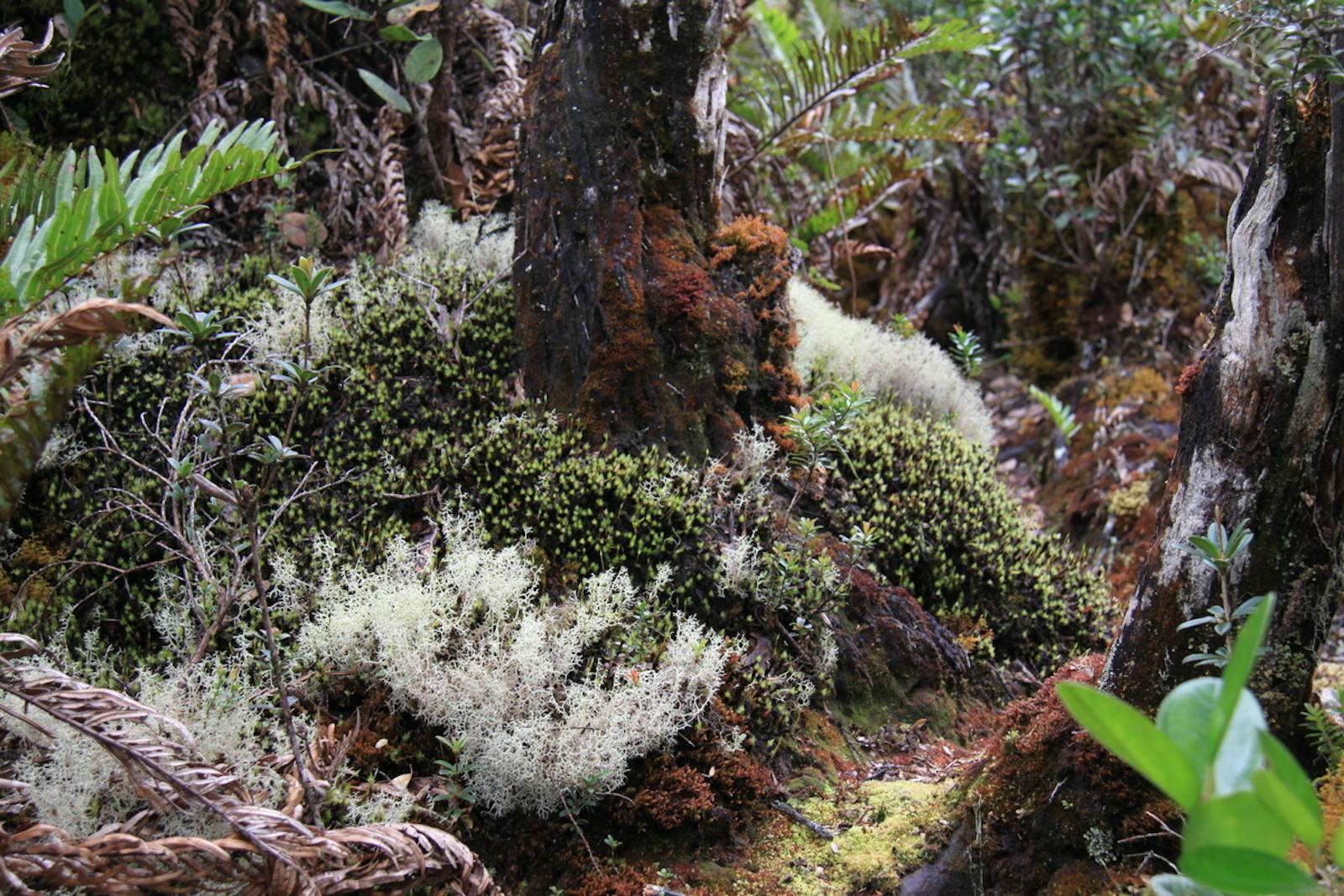Sumatran Montane Rainforests
The ecoregion’s land area is provided in units of 1,000 hectares. The conservation target is the Global Safety Net (GSN1) area for the given ecoregion. The protection level indicates the percentage of the GSN goal that is currently protected on a scale of 0-10. N/A means data is not available at this time.
Bioregion: Peninsular Malaysian & Sumatran Tropical Rainforests (IM18)
Realm: Indomalaya
Ecoregion Size (1000 ha):
7,310
Ecoregion ID:
279
Conservation Target:
84%
Protection Level:
4
States: Indonesia
The titan arum produces the world’s tallest flower that can reach over 9 m. But its size is not the only attractive feature of the flower; it also stinks like a long-dead, rotten corpse, which is why the plant is also known as the corpse plant, including in the local language. The nauseating odor serves a purpose. The flower is pollinated by flies that are attracted to the flower because of its smell. The flower has another trick: it heats up to volatilize and waft the chemicals that produce the smell widely through the montane rainforests of Sumatra.
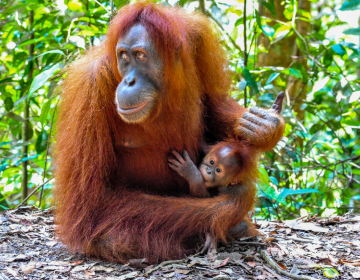
The flagship species of the Sumatran Montane Rainforests ecoregion is the Sumatran orangutan.
The Sumatran Montane Rainforests ecoregion represents the forests above 1,000 m in elevation along the Barisan Mountain Range that runs the length of Sumatra. The geologic history of Sumatra is complex. The island lies along the line of subduction between the undersea Indo-Australian plate and the Eurasian plate. The ongoing geological activity causes seismic activity, including the frequent earthquakes and volcanic eruptions.
The Barisan mountains range has 93 peaks that exceed 2,000 m, with the highest being Mount Kerinci at 3,805 m. In the north, the super volcano that erupted about 75,000 years ago now supports the massive Lake Toba within its crater. The western slopes of the mountain range receives more rainfall than the eastern side, which is in a rainshadow. The average annual rainfall in the west exceeds 4,700 mm, whereas the east receives less than half of that.
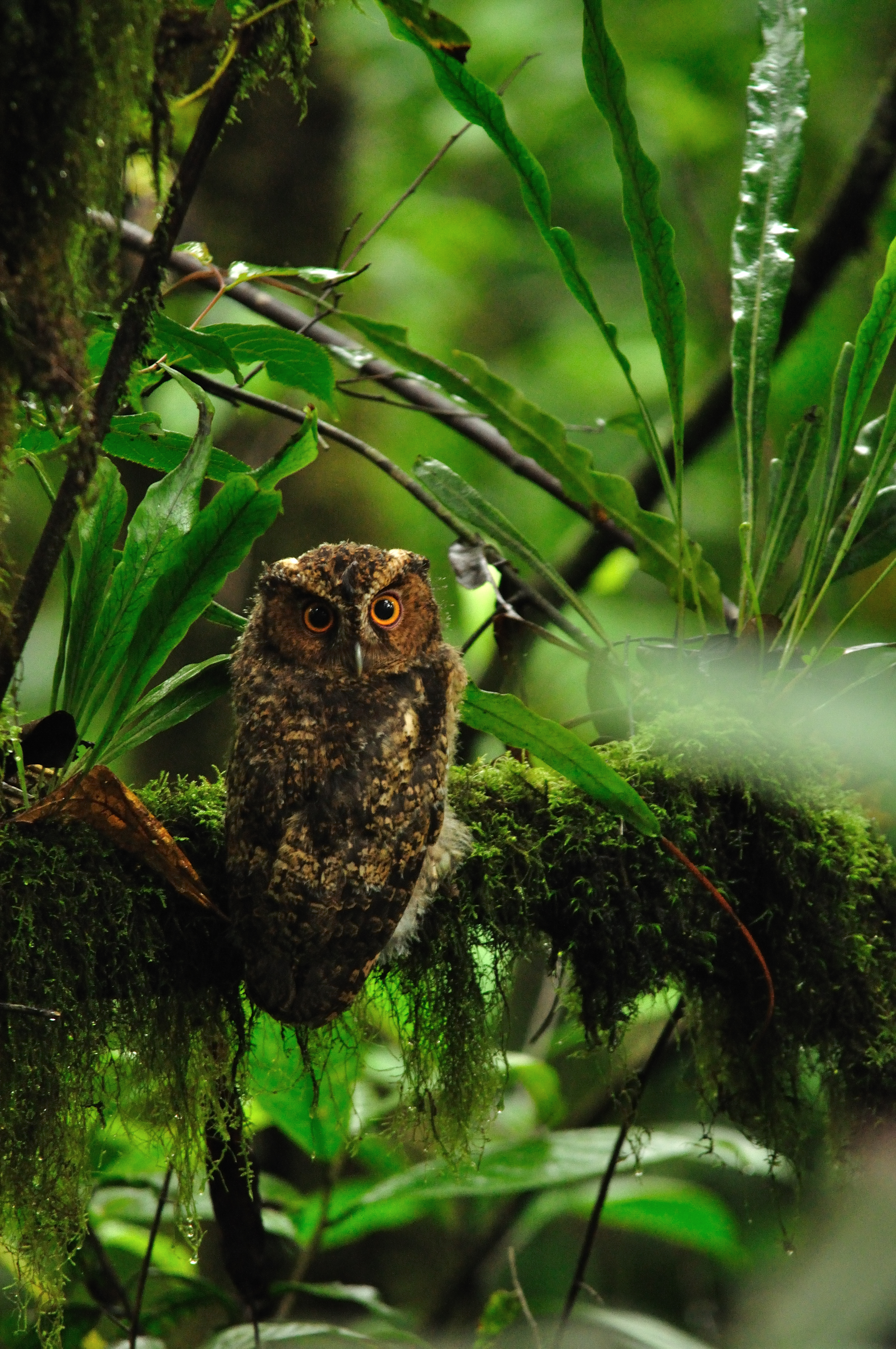
Rajah scops owl. Image credit: Creative Commons
Sumatra’s montane rainforests form three major zones. The lower montane forests have a mixed flora that includes immigrants from when the island was connected to the mainland and Borneo. These include species of Dipterocarpaceae, Bombacaceae, and Moraceae that grow in the lower montane forests and transition to species of Lithocarpus, Quercus, Castanea, Cinnamomum, Persea, and Litsea higher up. Cyathea tree ferns are common. The upper montane forest is characterized by conifers and species of Rhododendron and Vaccinium.
Lichens, mosses, and liverworts add diversity. The subalpine zone is characterized by smaller trees of the upper montane forest, but also has grasslands with Agrostis and Festuca grasses, rushes and sedges such as Juncus, Carex, Scirpus, and Cyperus in bogs, and a variety of small, colorful subalpine herbs. Five of the 16 species of the parasitic Rafflesia plants are found in Sumatra and have been recorded as high as 1,800 m on Mount Lembuh, Aceh.
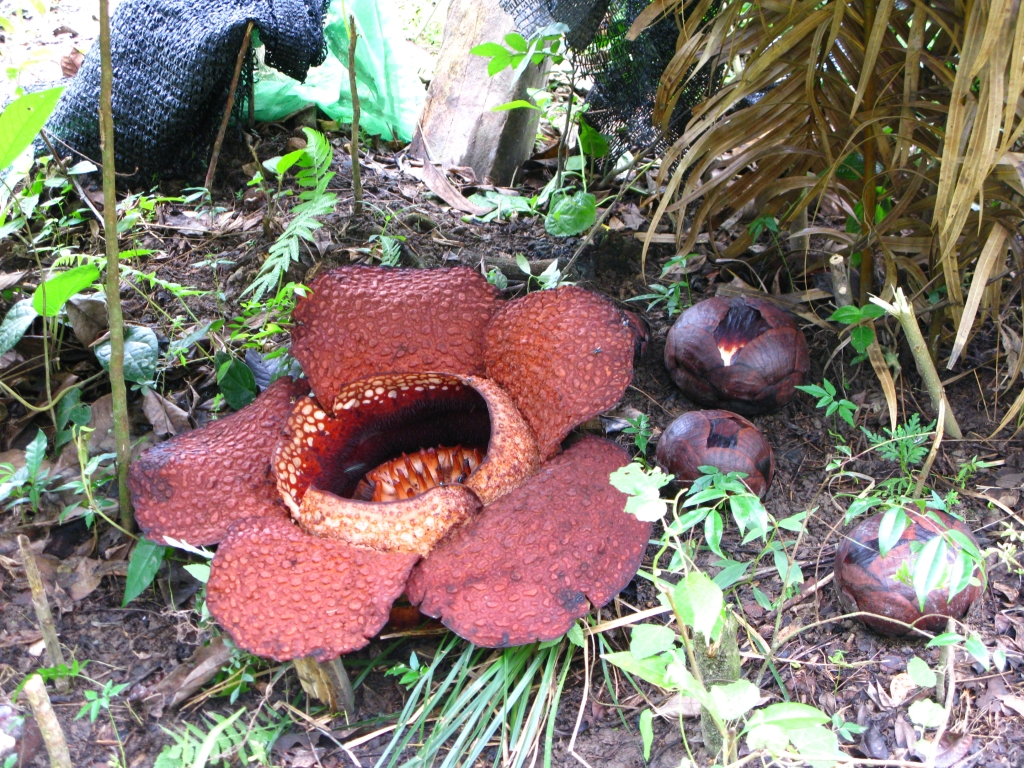
Rafflesia arnoldii and buds, the largest flower in the world. Image credit: Creative Commons
Two refugee populations, totaling less than 100 animals, of the critically endangered Sumatran rhinoceros occur in Gunung Leuser and Bukit Barisan Selatan reserves in this ecoregion. This rhino once had a vast distribution range, from the Himalayan foothills through southern China, into Sumatra and Borneo. The larger populations of the rare Sumatran tiger are also found in the montane forests. The Sumatran orangutan exhibits seasonal movements from the lowlands into the montane forests in search of fruiting trees.
The ecoregion supports other forest-dwelling primates, including Thomas’ leaf-monkey, white-handed gibbon, and dark-handed gibbon. Thirty-five restricted-range bird species live in this ecoregion, including two endemic species: the Sumatran cochoa and Sumatran ground-cuckoo.
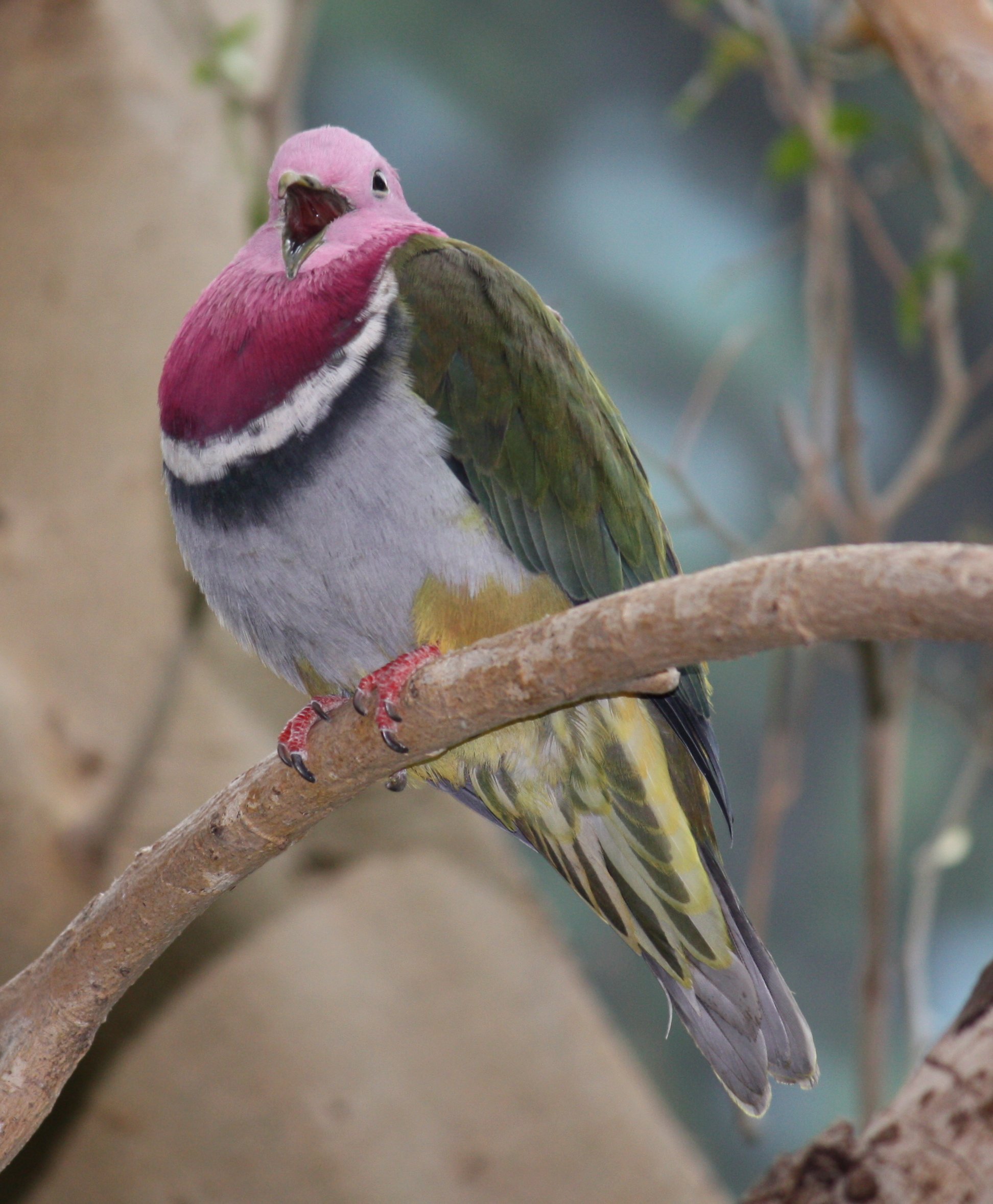
Pink-headed fruit dove. Image credit: Creative Commons
Despite Sumatra’s dense human population, the ecoregion still has large forest patches. Several are already formally protected. The protected areas system accounts for almost a third of the ecoregion area, but encroachment into the montane forests is increasing, especially as small-scale farmers marginalized in the lowlands by the large plantations move here. The mountains represent the water sources for Sumatra, and conservation of the montane forests is imperative for economic development and to sustain human communities. Wildlife poaching, including of threatened species like the tiger and orangutan is common.

Salvadoris pheasant. Image credit: Frank Wouters, Creative Commons,
Thus, the recommended priority conservation actions are to: 1) develop landscape scale conservation plans to create ecological habitat linkages between the montane and lowland forests; 2) stop illegal logging and forest clearing, especially on steep slopes and ecologically sensitive areas; and 3) stop wildlife poaching.
Citations
1. Darajati, W., Pratiwi, S., Herwinda, E., Radiansyah, A.D., Nalang, V.S., Nooryanto, B., Rahajoe, J.S., Ubaidillah, R., Maryanto, I., Kurniawan, R. and Prasetyo, T.A., 2016. Indonesian Biodiversity Strategy and Action Plan (IBSAP) 2015-2020. Kementerian Perencanaan Pembangunan Nasional (BAPPENAS).
2. Whitten, T. and Damanik, S.J., 2012. Ecology of Sumatra. Tuttle Publishing.
3. Laumonier, Y., 2012. The vegetation and physiography of Sumatra (Vol. 22). Springer Science & Business Media.


